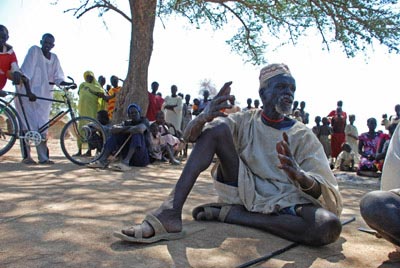
A new proposal for a Darfur peace process is out, courtesy of the Sudan Now campaign.
With international attention focused almost exclusively on the North-South dynamics ahead of the southern referendum, conditions in Darfur have deteriorated with little attention. Amid recent aerial bombardments by the Sudanese Armed Forces and fresh clashes between various rebel groups and the Sudanese army, backed by government-supported militias, civilians in Darfur have been displaced en masse – often multiple times. Meanwhile, a peace process hosted by the Qatari government has been ongoing, but its inability to translate into meaningful stability on the ground in Darfur is stark.
“A Roadmap for Peace in Darfur” puts forth three essential components of an effective plan. See the full report for details, but in summary, the three points include:
- High-level political negotiations outside of Sudan between the various parties to the conflict,
- Civil society engagement with Darfuris inside and outside of the country.
- High-level coordinated diplomatic engagement to push for democratic transition in North Sudan in support of human and civil rights in the region.
Notably, the report comes out strongly against the Sudanese government’s position that a renewed peace process should be hosted exclusively inside Sudan:
Frustration with Doha, which threatens to result in an even worse outcome than the failed 2006 Darfur Peace Agreement, signed in Abuja, clearly necessitates a radical reexamination of the overall peace strategy for Darfur. The shortcomings of Doha and Abuja, however, will only be worsened by acceding to the Sudanese government’s plan for full nationalization or “domestication” of the peace process prior to fundamental changes on the ground, and will not be solved solely by cosmetic changes to the venue and mediation. Recent escalating attacks on civilians by the Sudanese Armed Forces and rebel groups, ongoing restrictions on humanitarian and peacekeeper access, and the detention and repression of human rights activists and political protestors make Sudan an impossible venue for such critical negotiations.
The report also includes a useful matrix that lays out the elements of the Sudanese government’s strategy for Darfur point-by-point and provides a critique of each.
While the new report focuses on the need to recalibrate a peace process for Darfur and ensure humanitarian access to the region, it is important to emphasize that an effective process for Darfur is one element of a larger all-Sudan strategy that the international community should push, with leadership from the United States. Gone should be the days of enabling the conflicts in Sudan to be played against each other.
The southern referendum marked a significant step toward peace in the country, and the United States played an important role in this smooth outcome. Now the United States and other key players in the international community should ensure that this positive trajectory continues by reinvigorating the Darfur peace process as part of a larger effort to push for the proper handling of the center-periphery issues in the North that are at the core of the Darfur conflict.

